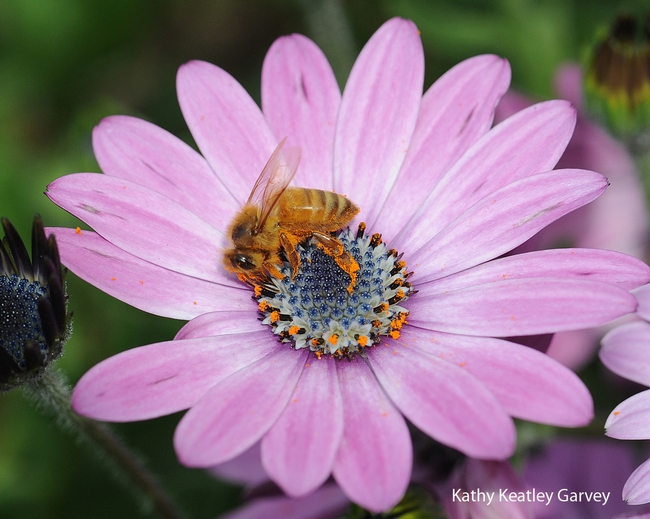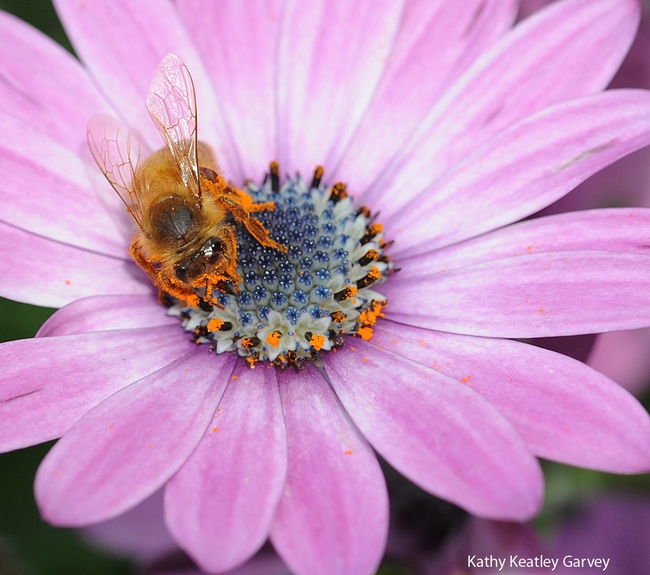You've heard of "Got milk?"
With honey bees, it's "Got pollen?"
We spotted a lone honey bee on an African daisy last weekend. It was clear she'd been foraging for pollen. Pollen covered her legs and antennae and rimmed her head. And it was clear where it came from. The pollen on the daisy and the pollen on her matched perfectly.
"The importance of pollen for the health and vigor of the honey bee colony cannot be overstated," writes Norman Gary, emeritus professor of entomology at UC Davis, in his newly published book, Honey Bee Hobbyist: The Care and Keeping of Bees. "Bees need a balanced diet. Honey satisfies the bees' carbohydrate requirements, while all of the other nutrients--minerals, proteins, vitamins and fatty acids--are derived from pollen."
"Nurse bees consume large amounts of pollen, converting it into nutritious secretions that are fed to developing larvae," Gary writes. "During an entire year, a typical bee colony gathers and consumes about 77 pounds of pollen."
Gary further points out: "When she contacts the flower, pollen grains are attracted to her body, similar to the attraction of iron fillings to a magnet."
So, when you see a honey bee covered with pollen grains and think--"What a load!"-- that's just part of the 77 pounds gathered and consumed in a colony per year.
Attached Images:

Honey bee collecting pollen on an African daisy. (Photo by Kathy Keatley Garvey)

Close-up of bee covered with pollen. (Photo by Kathy Keatley Garvey